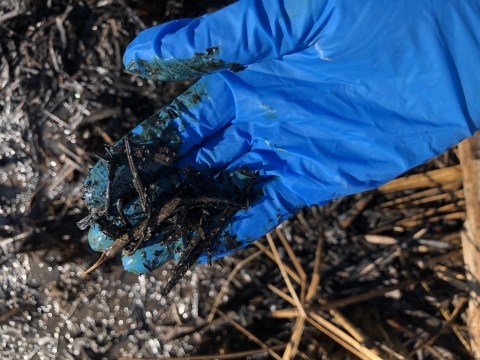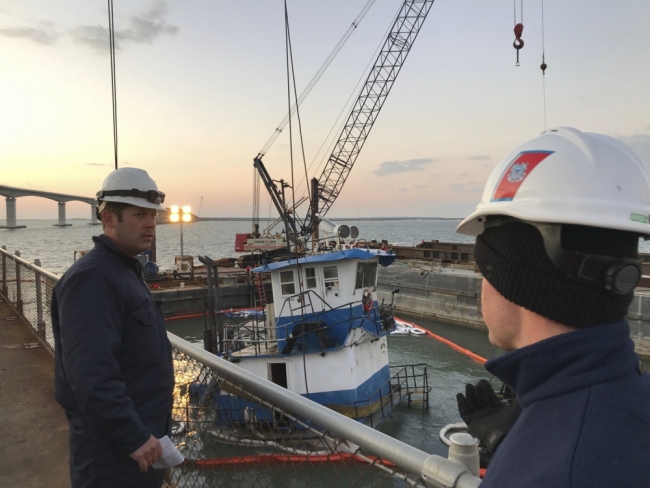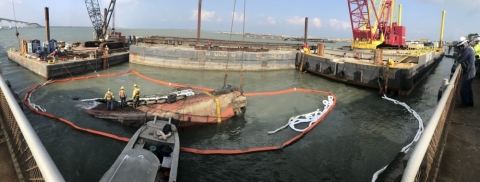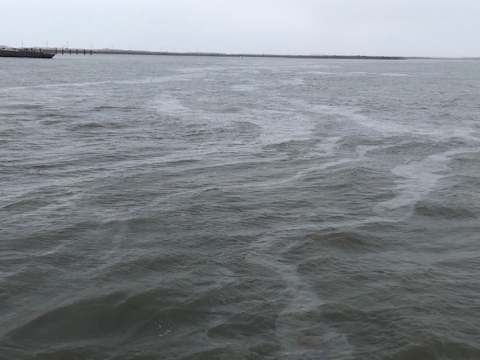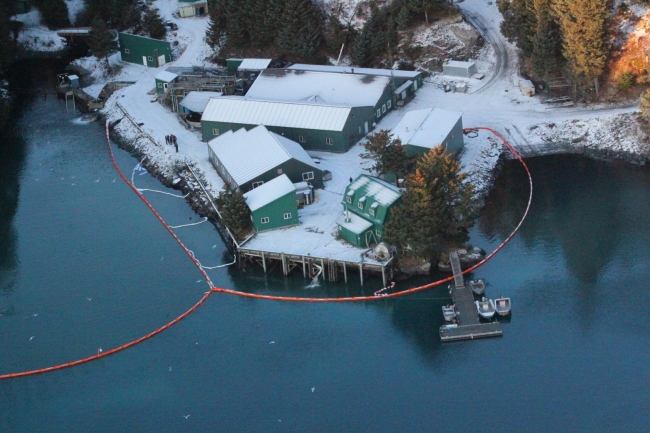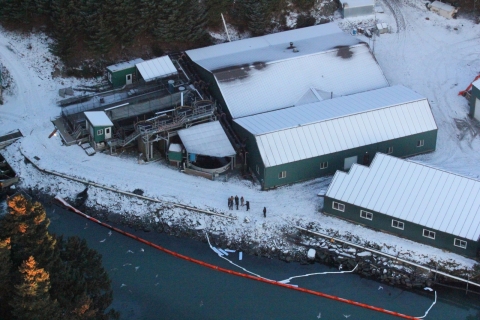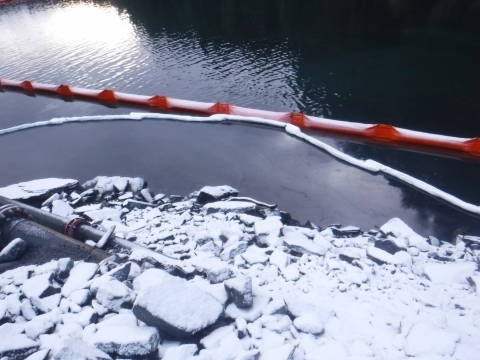Every month our Emergency Response Division provides scientific expertise and services to the U.S. Coast Guard on everything from running oil spill trajectories to model where the spill may spread, to possible effects on wildlife and fisheries and estimates on how long the oil may stay in the environment.
This month OR&R responded to 12 incidents, including oil discharges, sunken vessels, and other pollution-related incidents.
Here are some of November's notable incidents:
Oil Well Leaks Several Barrels of Oil into Marsh near Barataria, Louisiana
On Nov. 9, the Texas Petroleum Investment Company discovered a flowline in an oil well had developed a leak and released oil into a floating marsh at Delta Farms near Barataria, Louisiana. The initial estimate was reportedly less than 10 barrels (420 gallons) of oil released.
The U.S. Coast Guard notified and brought in NOAA to assess the potential for an in situ burn of the less than 1 acre impacted by the spill. The response team concluded that a burn would be the most effective way to remove the oil. The marsh area was burned on Nov. 18 and contained to the impacted area.
In a post-burn assessment, responders found no dark oil product on site and determined that vegetation growth shouldn’t be hindered by the spill or the burn.
Tugboat Allides with Herbert C. Bonner Bridge, Discharges Diesel Fuel into Oregon Inlet, North Carolina
On Nov. 17, a tugboat reportedly allided with the Herbert C. Bonner Bridge in Oregon Inlet, North Carolina. The eight people aboard the tugboat all made it safely to shore with no reported injuries.
The tugboat was overwhelmed with storm surge, which resulted in the vessel overturning and becoming partially submerged. The U.S. Coast Guard received a report of a sheen the following morning, and found the tugboat semi-submerged and leaning against the bridge when they arrived on scene.
NOAA’s scientific support coordinator for the region, Frank Csulak, went on scene and provided trajectory support to the Coast Guard. Csulak identified the most likely trajectory for the discharged oil, which helped direct response operations to mitigate environmental impacts.
The tugboat, Miss Bonnie, had an estimated 3,000 gallons of diesel fuel on board at the time of the incident, according to a Coast Guard press release. The amount of oil released is unknown at this time. Responders deployed 2,500 feet of sorbent boom and 1,600 feet of containment boom to prevent further impacts. The vessel was later dewatered and towed to a harbor to await further salvage operations.
Oil Release at Kitoi Bay Hatchery on Afognak Island, Alaska
On Nov. 22, the Alaska Department of Environmental Conservation reported a diesel fuel release at the Kitoi Bay Fish Hatchery on Afognak Island in Alaska. A leak was detected two days earlier during a fuel transfer to an underground storage tank. An estimated 200 to 1,000 gallons of fuel was released.
The Oil Spill Liability Trust Fund was opened in the amount of $15,000 to be used for cleanup, according to a Coast Guard press release. Pollution boom and sorbent were placed around the affected area, and a skimmer was used to remove some of the recoverable oil.
Marine Safety Detachment Kodiak is leading the response as cleanup efforts continue.
Here is the complete list of last month’s incidents, click on the links to find out more:
- F/V FT Pierce Lady
- HFO Spill, Honolulu Harbor, HI
- Calcasieu Ship Channel Discharge
- F/V Miss Haley sunk
- TPIC Bayou Perot ISB 2019
- Onyx Grounding
- Recreational vessel TUSSLER sunk
- OSV BOTRUC 22 spill
- Crowley Barge 650-2 Crude Oil Spill
- Tugboat Miss Bonnie Allision, Oregon Inlet, NC
- Kitoi Bay Hatchery Release
- TPC Port Neches Explosion



